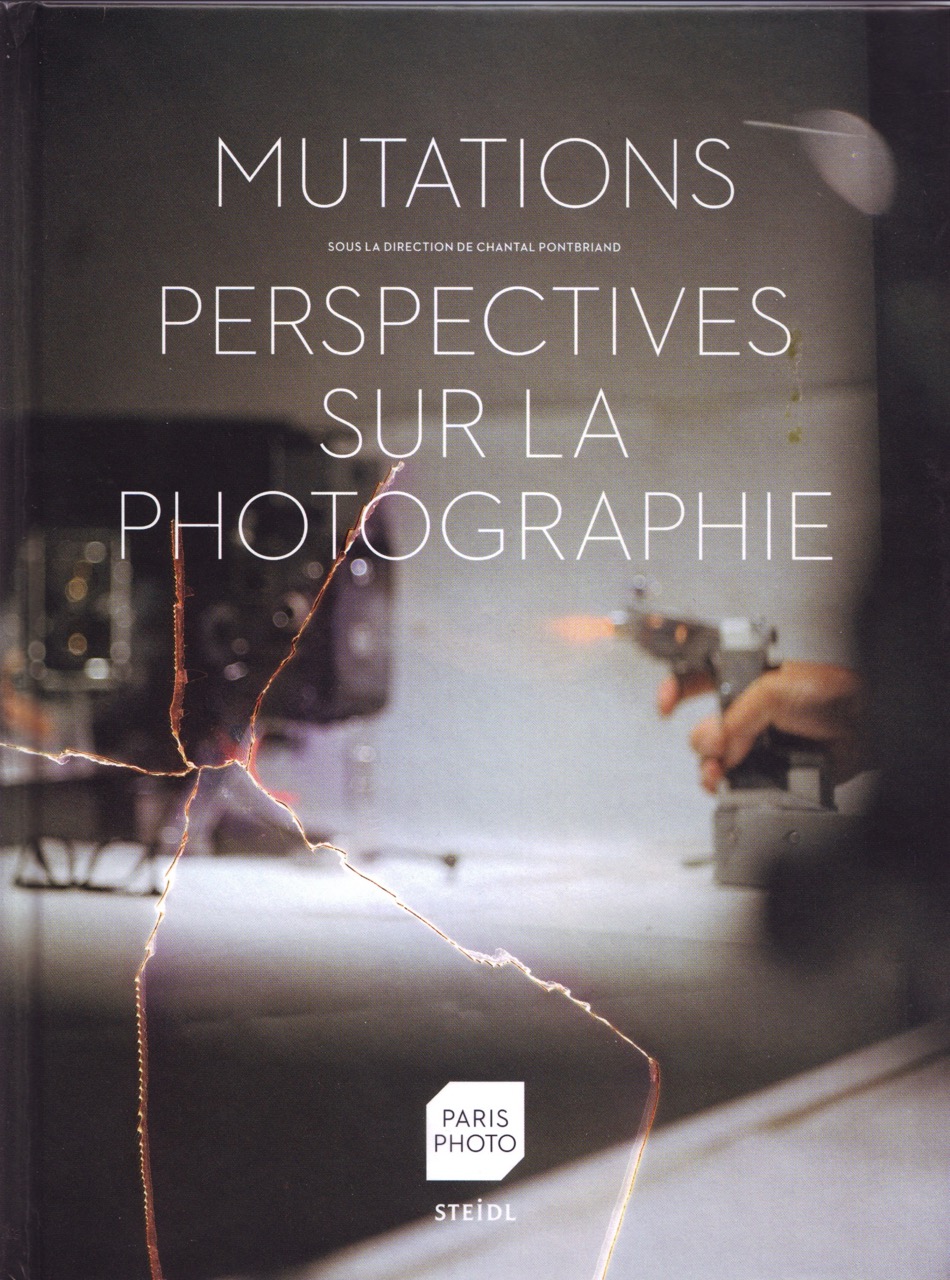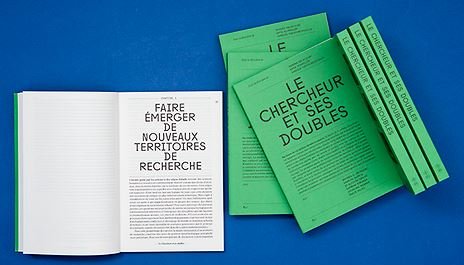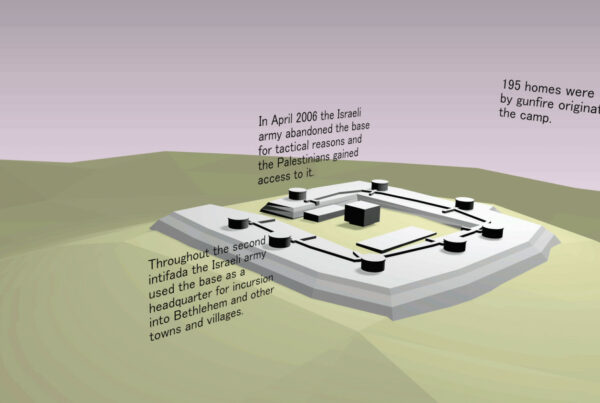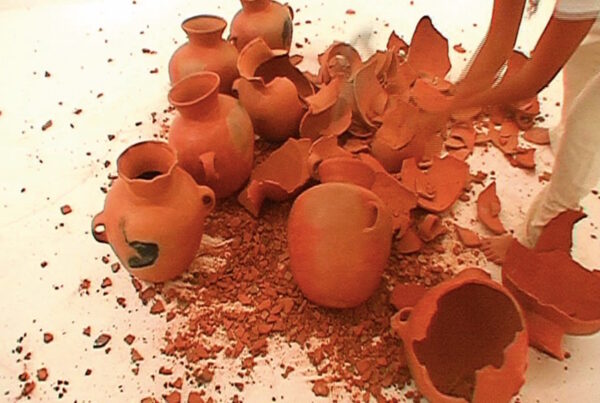Antiphotojournalism : strategies of the visible and the invisible
by Aliocha Imhoff & Kantuta Quirós
in Mutations – Perspectives on photography
Paris Photo/ Steidl, 2011
Under the direction of Chantal Pontbriand
Contrary to the controversies on the possibility for photography or cinema to document and represent the disaster and the Shoah (Claude Lanzmann, Gérard Wajcman, Georges Didi- Huberman, Jean-Luc Godard, Serge Daney), some approaches, straying from the iconoclastic positions, propose a questioning made of contaminations, and that within the conceptual perimeter of photojournalistic practice.
In his book Aesthetic Journalism published in 2009, the artist and curator Alfredo Cramerotti identified a “journalistic turn in art”, recently displayed in his remarkable exhibition curated at the Quad in Derby (UK) with Simon Sheikh: All That Fits : The Aesthetics Of Journalism (2011). An exhibition that was in keeping with a recrudescence of curatorial projects questioning journalistic aesthetics and epistemology such as the exhibition Antiphotojournalism (Virreina , Barcelona, 2010; Foam-Amsterdam, 2011), organised by Carles Guerra and Thomas Keenan and which gathered, under the neologism borrowed from Allan Sekula, practices of artists at the edge of photography, video and installation, placing in crisis the photojournalistic representations of wars, politico-military conflicts, genocides or poverty.
The relevance of that questioning could be read by the yardstick of several mutations: the spectacular inflation of the economy through the decentralised circulation of images, concomitant with the crisis in historic journalism; the hegemony of new visualities of war, corresponding to a first break which would be that of the first Gulf war, visualities described in 1994 by McKenzie Wark as telaesthetics, then to a second break, that of the visual economy of the military imaginary post-11 September. The media coverage of wars becomes, for the army staff, a strategic parameter of first importance . The American interventions in the Middle East set up non- lethal interventions , presented as therapeutic , while the real conducting of operations are made invisible (Derek Gregory, 2008; Nicholas Mirzoeff, 2009).
The emergence of the phenomenon of journalists covering the war from their hotel, broadcasting images provided by the armies, images often produced at a distance and by weapons whose nature is double , at the same time tools for the production of images and instruments of destruction, leading to a becoming-machine of the gaze. On the other hand, the inflation in the representation of contemporary figures of poor, displaced people, migrants, non-citizens, victims of wars, that Martha Rosler in The Bowery in Two Inadequate Descriptive Systems (1974) was already criticizing as the “photography of victims” and that the postcolonial theory deconstructs today as essentialization of the subjects photographed in a fatum and an allochronic distance. That fabrication of figures of otherness (geographical, cultural, temporal, racial, economical) especially in Africa, constructs postcolonial subjects photographed as substantially under-developed (Homi Bhabha, 1997; Jeremy Silvester and Patricia Hayes, 1998; T.J. Demos, 2011). Through the use of the notion of afropessimism, Okwui Enwezor (2006) pushed even further the criticism made by Susan Sontag on photojournalism in her famous book Regarding the Pain of Others (2003), that showed how the spectacle of suffering and the empathy facing the victims’ pain erase the structural dimension of the relations of exploitation and dominion. The postcolonial theoretician Achille Mbembé used the term “pornography of poverty” (2010), exacerbating African necropolitics (2003). In that context, some artists place their critical practices in a tradition of subversion or appropriation of the imagery of the press (Michal Heiman, Sean Snyder). Others chose to fictionalize the archives (Walid Raad/The Atlas Group, Joana Hadjithomas and Khalil Joreige, Rabih Mroué). In his series Attacks on linking – Photo rape, Michal Heiman collects and intervenes on photos published in the Israeli press, taken without the consent of the persans photographed, doubling up certain prejudices brought to Palestinian families by the Israeli army. The graphic interventions of Michal Heiman suture and reveal the visual predation inherent to those press photographs – that break with what the theoretician of photography Ariella Azoulay calls the “photographic civil contract” (2008) – and that Michal Heiman then points out and stamps as “photographie rape”. Oliver Chanarin and Adam Broomberg , Renzo Martens, Alfredo Jaar, Phil Collins and John Smith represent more the figure of the artist as a journalist, by physically going into a conflict or a warzone, or the place of the perpetration of a genocide. However they distance themselves from the practices of “authors’ photoreporting” supposed to contravene the dominant codes of photojournalism with their subjectivity (Antoine d’Agata, Stanley Greene) or their pictoriality (Luc Delahaye, Jo
Ratcliffe). They rather co nstruct an updating of the spectatorial economy, of the ideological links between production of the image, the truth , media construction of political conflicts, architectonics of the gaze, relations of authority between photograph and subjects photographed, reification and construction of a cultural otherness. In 2009, with a film called Episode III – Enjoy poverty, practicing a strategy of excess, the Dutch artist Renzo Martens took on colonial habitus with a controlled emphasis and gave a radical deconstruction of the bases of humanitarian photojournalism and of the industry of the imagery of misery.
At the opposite, “anti-photojournalism” can borrow strategies of subtraction and the paths of a photography which would tend to the inobjectality : the “latent images” (1997-2006) of the Lebanese civil war by Joana Hadjithomas and Khalil Joreige, which, in a state of potentiality, can at any moment be updated, developed and displayed; the minimalist memorials, swaying between visible and invisible, of Alfredo Jaar for his own photographs of the Rwandan genocide, (Rwanda project, 1994- 2000), of disappeared images (Lament of the images , 2002), or of the famous photograph by the photojournalist Kevin Carter of a dying Sudanese child (The sound of silence, 2006). Finally, in 2008, Adam Bloomberg and Oliver Chanarin went to Afghanistan to the frontline next to the British army. In response to the events, from the spectacularly bloody to the most banal, and instead of taking out their cameras, Broomberg and Chanarin unravelled a roll of photo paper fifty metres long that they exposed to light to produce nonfigurative photographs, counter-images eluding the spectacular war photos de rigueur (The Day Nobody Died).
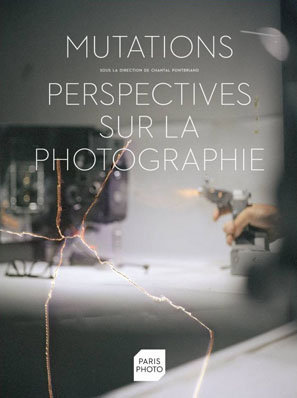
MUTATIONS, PERSPECTIVES ON PHOTOGRAPHY
edited by Chantal Pontbriand
BOOK Platform
With the LUMA Foundation
Mutations, Perspectives on Photography, the book, is structured around four sections: Geography / Technology / Society and Media / Body.
It offers cross-cutting views on current themes, artists, the art world and social phenomena. Worldviews, ways of working, techniques and methodologies that manifest themselves in art as well as in the vernacular use of the medium are mapped and commented on by critics, art historians, collectors, and, no less, by the artists themselves.
MUTATIONS, PERSPECTIVES SUR LA PHOTOGRAPHIE, edited by Chantal Pontbriand, preface by Julien Frydman, Steidl/Paris Photo, 2011, 416 pages, 60 authors, 391 images, available in French and English, 28 euros.
https://www.amazon.fr/Mutations-Perspectives-photographie-Chantal-Pontbriand/dp/3869303573/
With contributions by:
Adrian Rifkin
Alessandra Sandrolini
Alexia Tala
Ali Akay
Allan Sekula
Artur Walther
Boris Groys
Brian Wallis
Caoimhín Mac Giolla Léith
Carles Guerra
Caroline Hancock
Chantal Pontbriand
Christine Frisinghelli
Christophe Kihm
Christopher Philips
Clara Schulmann
Clément Chéroux
David Campany
Dork Zabunyan
Elena Sorokina
Elisabeth Lebovici
Elke Krasny
Françoise Parfait
Giovanna Zapperi
Guillaume Le Gall
Hal Foster
Hans-Ulrich Obrist
Hito Steyerl
Jacinto Lageira
Jean-François Chevrier
Jean-Luc Moulène
Jennifer Gonzalez
Joana Hurtado
Joerg Bader
Jonas Ekeberg
Kantuta Quirós / Aliocha Imhoff
Kimberli Gant
Maja Hoffmann
Makiko Hara
Marie Murraciole
Maureen Murphy
Mr pippin
Nadia Tazi
Nataša Petrešin-Bachelez
Paola Yacoub
Peter Weibel
Rabih Mroué
Régis Durand
Roxana Marcoci
Sabeth Buchmann
Sam Stourdzé
Sarah Wilson
Saskia Sassen
Sébatien Pluot
Shanay Jhaveri
Simon Baker
Sønke Gau
Taryn Simon
Tim Etchells
Victor Burgin
Yann Chateigné
Mutations – Perspectives on photography
under the direction of Chantal Pontbriand
https://www.amazon.fr/Mutations-Perspectives-photographie-Chantal-Pontbriand/dp/3869303573/
Featuring
| Adrian Rifkin Alessandra Sandrolini Alexia Tala Ali Akay Allan Sekula Artur Walther Boris Groys Brian Wallis Caoimhín Mac Giolla Léith Carles Guerra Caroline Hancock Chantal Pontbriand Christine Frisinghelli Christophe Kihm Christopher Philips Clara Schulmann Clément Chéroux David Campany Dork Zabunyan Elena Sorokina Elisabeth Lebovici Elke Krasny Françoise Parfait Giovanna Zapperi Guillaume Le Gall Hal Foster Hans-Ulrich Obrist Hito Steyerl Jacinto Lageira Jean-François Chevrier Jean-Luc Moulène | Jennifer Gonzalez Joana Hurtado Joerg Bader Jonas Ekeberg Kantuta Quirós / Aliocha Imhoff Kimberli Gant Maja Hoffmann Makiko Hara Marie Murraciole Maureen Murphy Mr pippin Nadia Tazi Nataša Petrešin-Bachelez Paola Yacoub Peter Weibel Rabih Mroué Régis Durand Roxana Marcoci Sabeth Buchmann Sam Stourdzé Sarah Wilson Saskia Sassen Sébatien Pluot Shanay Jhaveri Simon Baker Sønke Gau Taryn Simon Tim Etchells Victor Burgin Yann Chateigné |
